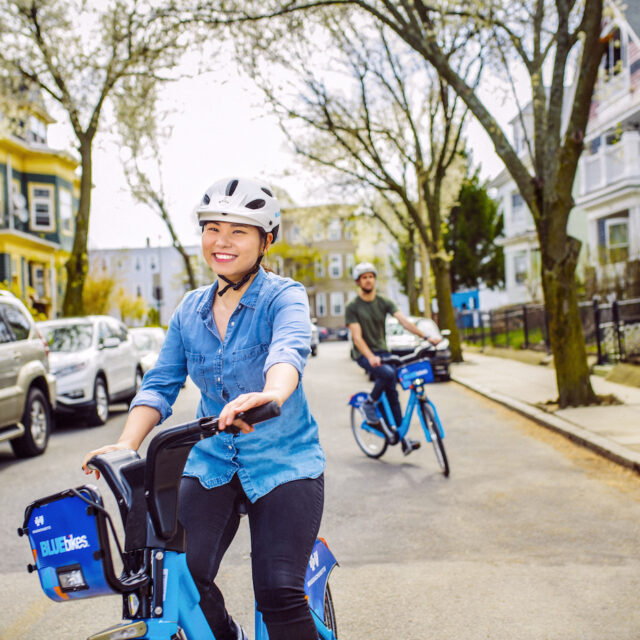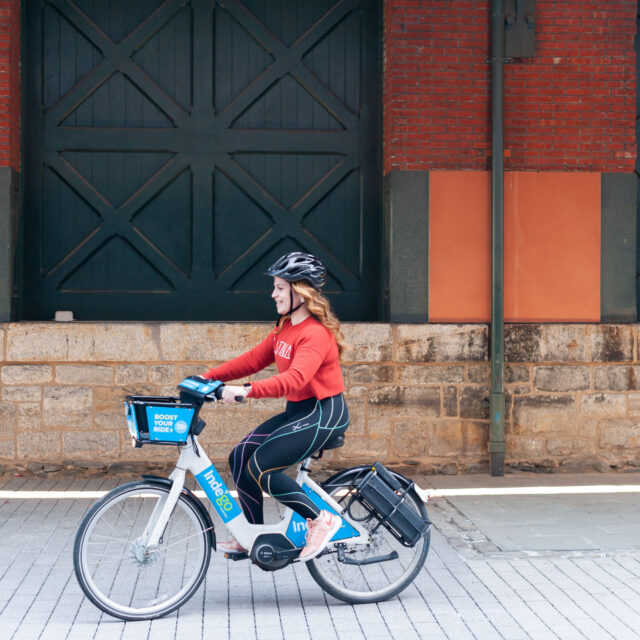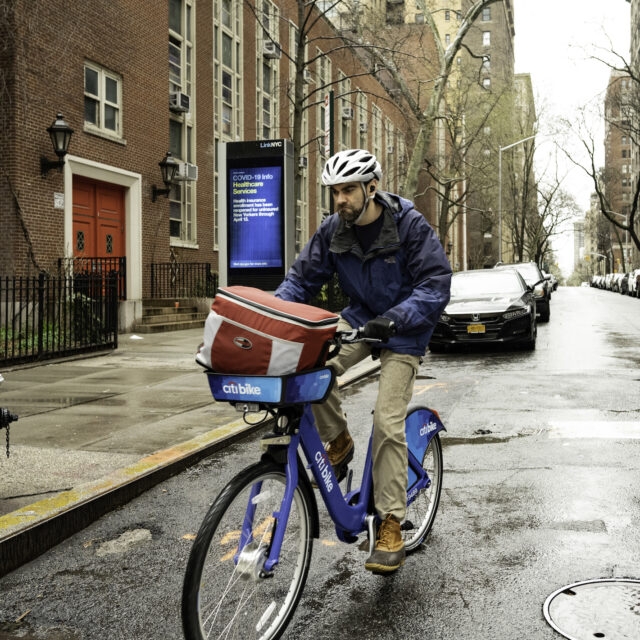Protected Bike Lanes Are Better For Bike Share
by Kiran Herbert, Communications Manager
September 10, 2021
Research conducted in Boston, Massachusetts, suggests that new protected bike lanes boosted bike share traffic by 80%.

Photos courtesy of the City of Boston.
In July, Elizabeth Karpinski, a senior data scientist for the MITRE Corporation, published a research paper in the Case Studies on Transport Policy journal. The statistical analysis, which used ridership data from Bluebikes—the bike share system serving Boston, Massachusetts—found that Commonwealth Avenue protected bike lanes, completed in 2019, increased bike share traffic by 80% when compared to the paint-only bike lanes that previously existed.
As Karpinski points out in the paper, while many studies have made connections between ridership and the built environment, few provide relevant quantitative guidance. By studying a single intervention (the installation of a protected bike lane) and its effect on Bluebikes riders, the study supports the idea that replacing conventional bike lanes with protected ones can make a difference in ridership. The findings also suggest that the influence of a bike lane is strongest when trip origins and destinations are under a mile from the bike lane, which is useful information for those planning bike networks.
In an interview with Streetsblog Mass, Karpinski cautions against giving the new bike lanes all the credit for increased ridership. In that same time period, bike traffic across the city increased and Bluebikes also underwent a major expansion, with new docks installed along Commonwealth Avenue. Still, Karpinski’s research used three different statistical models and found that the new protected lanes did have a statistically significant effect on Bluebikes use.
While it’s true that bike share users are more likely to be less experienced and risk-adverse riders, protected bike lanes benefit everyone. PeopleForBikes’ research shows that inadequate infrastructure is a top barrier to bicycling and that investing in well-lit, protected bike lanes were the number one thing cities could do to increase people’s—especially women’s—comfort with riding (secure bicycle parking, contraflow bike lanes and safer pedestrian crossings were also noted as important). If we hope to entice more folks to ditch their cars in favor of bikes, then investing in more protected bike lanes remains a crucial first step.
The Better Bike Share Partnership is funded by The JPB Foundation as a collaboration between the City of Philadelphia, the National Association of City Transportation Officials (NACTO) and the PeopleForBikes Foundation to build equitable and replicable bike share systems. Follow us on Facebook, Twitter and Instagram or sign up for our weekly newsletter. Got a question or a story idea? Email kiran@peopleforbikes.org.



